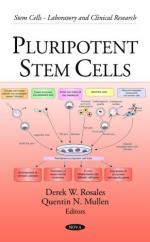|
This section contains 430 words (approx. 2 pages at 300 words per page) |

|
A fertilized egg is totipotent, meaning that it has the potential to give rise to every type of cell needed for the development of the organism. The cell undergoes successive divisions, and at the beginning, the resulting identical cells are also totipotent. These cells form a hollow ball called a blastocyst, which contains a cluster of cells called the inner cell mass. At this point, some specialization of cells has already occurred. The outer layer of cells will form the extraembryonic membranes that will support the developing embryo, and the inner cell mass will form the embryo, itself.
The cells of the inner cell mass are known as pluripotent. Because they are incapable of giving rise to the supporting cells of the extraembryonic membranes, they are not sufficient for fetal development. Each of the inner-cell-mass cells does, however, have the potential to become any...
|
This section contains 430 words (approx. 2 pages at 300 words per page) |

|


